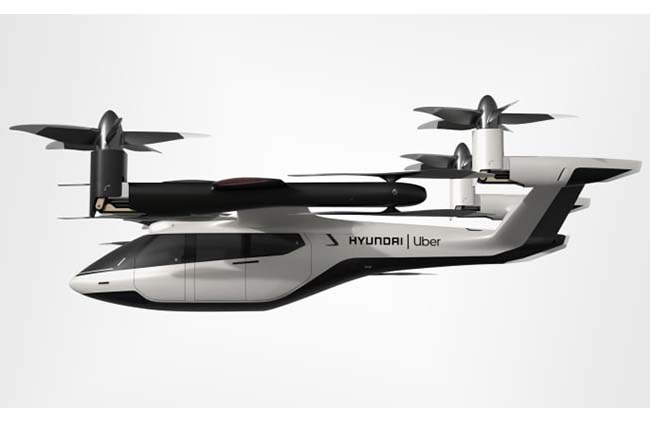
Last year, Hyundai has announced that it will be showcasing a flying car concept at the 2020 Consumer Electronics Show. The South Korean automotive brand delivered, as it teamed up with Uber and joined in on its plans for an air taxi network – dubbed as the Personal Air Vehicle (PAV).

Specific details on the flying concept car are still up in the air (pun intended) like when Hyundai plans to make a working prototype but what is known is that the vehicle will be electrically powered. The concept vehicle will also be able to take off and land vertically. While the concept vehicle itself is more of a plane than a car, it does feature two tilt rotors located on the tail. 10 other rotors are also present in the car but spread around the egg-shaped cabin.
The flying car can seat up to five people and will have a cruising speed while airborne of 290 km/h and will have a cruising altitude of 300-600 meters. Hyundai states that the use of electric power motors will not only produce less noise, it will also be more environmentally friendly. This is important especially for city areas that don’t want to have noise pollution. The vehicle will require at least five to seven minutes of charging and will have a range of 100 kilometers between charging.
This concept flying car could be the answer we have all been looking for when it comes to the ever-growing traffic congestion problem. As more land-based cars fill the already crowded streets, the Korean automaker looks to the skies as the new frontier of transportation.
The Korean company plans to unveil its first PAV as part of its Urban Air Mobility (UAM) division. UAM has the distinction of being the first-ever flying division of a car manufacturer. The goal of the division is at this stage simple as it seeks to provide innovative and smart mobility solutions that have never been seen or thought of before.
The move to take to the skies is the result of what the company calls “mega-urbanization” as the roadways become increasingly crowded and with road widening options being limited. Instead of being limited by just ground-based roadways, new paths can be created and stacked on top of one another maximizing the limited space of cities.
Latest News
-
Geely’s EX2 EV headed to Australia — is a Philippine launch possible? / News
The Geely EX2 is confirmed to go on sale in Australia in 2026. Could a launch in the Philippines also be on the cards?
-
Hyundai Motor Philippines is the FIFA Futsal Women's Teams' official mobility partner / News
Hyundai Motor Philippines strengthened its partnership with FIFA through its support of the FIFA Futsal Women's Teams.
-
Kia Philippines backs EJ Obiena as Atletang Ayala continues championing Filipino athletes / News
Kia Philippines strengthens its support for EJ Obiena, backing the Olympian with dedicated mobility at home and abroad.
Popular Articles
-
Electric Vehicles in the Philippines for under P1 million
Jerome Tresvalles · Aug 19, 2025
-
Top 3 Cars For Every Lifestyle—What Cars Are Right For You? | Behind a Desk
Caco Tirona · Apr 24, 2024
-
5 Tips to Maximize Fuel Efficiency
Jerome Tresvalles · Sep 09, 2024
-
Five driving habits that are draining your fuel tank
Jerome Tresvalles · Jun 24, 2025
-
Can engine braking harm your engine?
Jerome Tresvalles · Sep 11, 2025
-
Do electric cars even need maintenance?
Jerome Tresvalles · Oct 23, 2024
-
Best vehicles for an active outdoor lifestyle
Shaynah Miranda · Jul 25, 2024
-
How to drive different types of vehicle transmissions
May 23, 2024
-
5 easy ways to keep your car interior clean
Allysa Mae Zulueta · Nov 15, 2021
-
How to survive Metro Manila traffic
Earl Lee · Aug 16, 2022



